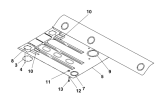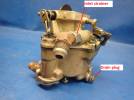Pinecone
En-Route
In the professional safety field, we do not use the term Accident. Accident implies things that are out of control of the people involved. We use the term Mishap.
In the work world, normally 80 - 85%% of mishaps are caused by unsafe acts. Only about 1% are actually accidents.
In the work world, normally 80 - 85%% of mishaps are caused by unsafe acts. Only about 1% are actually accidents.






